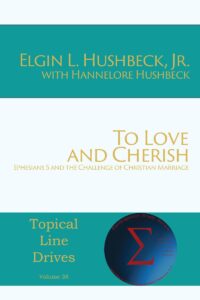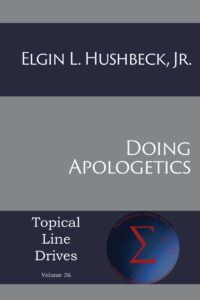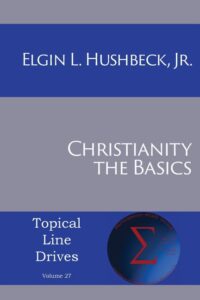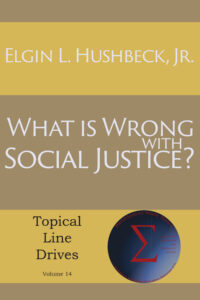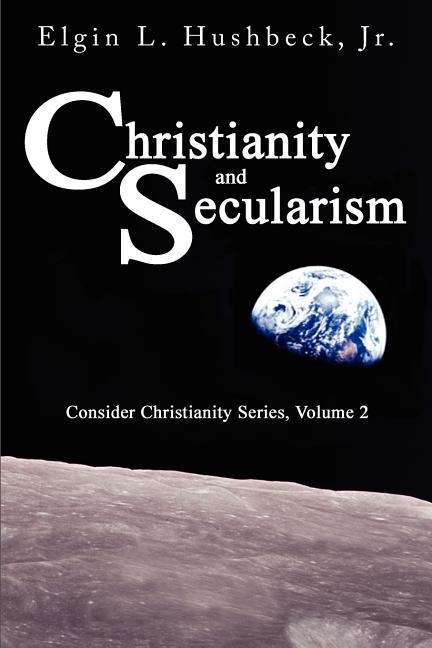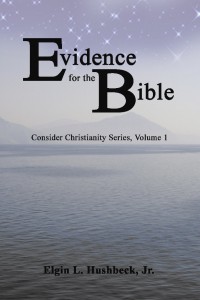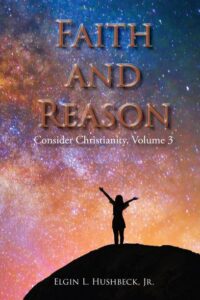The Epistles of John: Living in Truth and Love. 1 John 3:7
Thursday, May 3rd, 2012 by Elgin HushbeckWeek 28: Apr 29, 2012
John closes this first major section with a final warning and instruction.
Study
h. Don’t be Deceived (3:7 – 3:10)
i. Premise: Don’t be Deceived (3:7a)
7 – Little children, don’t let anyone deceive you.
– John closes out this first major section by returning to his original message with a final warning: Don’t be deceived. John’s opponents were spreading false doctrine. A major purpose of the first section has been to point out the errors of the group who left, so it is very fitting that John finishes this section with a final warning and a summation of his points.
– John does this by dividing the world into two camps: those that follow Jesus, and by implication the ones we can believe, and those who follow the devil and by implication are trying to deceive us.
ii Distinguishing between Righteous and Unrighteous (3:7b-3:10)
7b – The person who practices righteousness is righteous, just as the Messiah[1] isrighteous.
– When looking at whom to believe (i.e., not be deceived) we must look to their actions. A follower of the Jesus must be righteous, because Jesus was. This is more than just moral purity it also includes a proper relationship with God.
Questions and Discussion
As can be seen by the shortness of the study, this week had a lot of discussion. The initial jumping off point concerned the question of how Mormons, who often are so smart, can believe the claims of Mormonism. After all, the evidence against Mormonism is very strong. Before we had proceed down that path very far someone pointed out that secularists often make the same charge against Christians; how can seemingly smart people believe in Christianity?
First off, while the questions may at first seem similar, the answers are vastly different. This is because the levels and nature of the evidence for Mormonism and for Christianity are worlds apart. We know there was a Israel, a Judea, a Rome, an Assyria, and Egypt ruled by Pharaohs. We know that many of the cities mentioned such as Babylon, Jerusalem and Bethlehem existed. We know that people such as King David lived. We know that many of the events described occurred. In short we know that a large number of the things mentioned in the Bible are accurate.
On the other hand, not a single person, place, or event, mention in the Book of Mormon about the New World can be confirmed to have existed or occurred, and many of the things we know about the New World, do not seem to match the descriptions in the Book of Mormon. In short, when it comes to Mormonism vs. Christianity as it has been understood and practiced for 2000 years, the evidence is strongly on the side of historic Christianity.
How about the secularist? 50 years ago you could make a better case for the secularism, but not today. For example, 50 year ago all the classical arguments for the existent of God were seen as having been refuted and only of historical interest, to be studied only for what light they could shed on the thinking of earlier philosophers, but not to be taken serious today. Why? This was largely because of the philosophy of Kant. In extremely abbreviated form, Kant believed that our knowledge was limited by our ability to perceive, and that since we cannot perceive God, we cannot know anything about God. As a result the classical arguments can really tell us nothing.
This all seemed well and good in a world governed by Newtonian physics. But as Quantum Mechanics came to be understood, Kant’s theories broke down. Again in very brief fashion, if Kant was correct, then the uncertainly principle should likewise have been a barrier to our understanding. But it wasn’t. Before long scientist developed and tested theories, that if Kant was correct, they should not have been able to do. As a result in the later part of the 20th century all the classical theories were revived and are once again under serious discussion. This is just one of many developments that have cast doubt on naturalism.
In fact today it is the scientific naturalist, i.e., those that limit reality to the natural world, rejecting any possibility of a reality beyond the natural that has problems with the evidence. For example both major scientific theories for the origin of the universe require a beginning. Thus we have only two possibilities, either the universe, the natural world as we know it, came from nothing, or it came from something.
Something from nothing is a logical impossibility and if anything a definition of magic. To accept it would either be special pleading if restricted only to the origin of the universe, or would completely undermine the concept of science if taken as a general principle. Either view would undermine scientific naturalism. That leaves that it came from something. But this would demonstrate an existence of something beyond the natural and would likewise undermine scientific naturalism. Thus the current state of the scientific evidence argues strongly against scientific naturalism.
Nor does the evidence stop there. While miracles were difficult to account for in a world governed by Newtonian physics, they are not hard at all to account for in Quantum mechanics where everything is governed by probability. This is particularly true with the views of Quantum mechanics that claim that nothing actually happens until there is a mind that forces a resolution from an indeterminate state. In such a universe, why couldn’t the mind of God cause the quantum states in the dead body of Jesus, to resolved themselves into a state of life.
Given the state of the evidence today, the better question is not how a can a smart person be a Christian, but why isn’t everyone a Christian? The answer lies in the fact that in the end, this is not a question of evidence. The evidence is on the side of the Christian. The real problem is not evidence, but sin. It is not a matter of logical arguments but spiritual rebellion.
If you have question or comments about the class, feel free to send me an email at elgin@hushbeck.com and be sure to put “Epistles of John” in the header.
See here for references and more background on the class.
Scripture taken from the Holy Bible: International Standard Version®. Copyright © 1996-2008 by The ISV Foundation. ALL RIGHTS RESERVED INTERNATIONALLY. Used by permission. www.isv.org
Note: Some places I have modify the text from the ISV version. Passages that I have modified have been noted with and * by the verse number and the ISV text is included in a footnote.
Footnotes:
[1] 3:7 Lit. as he
